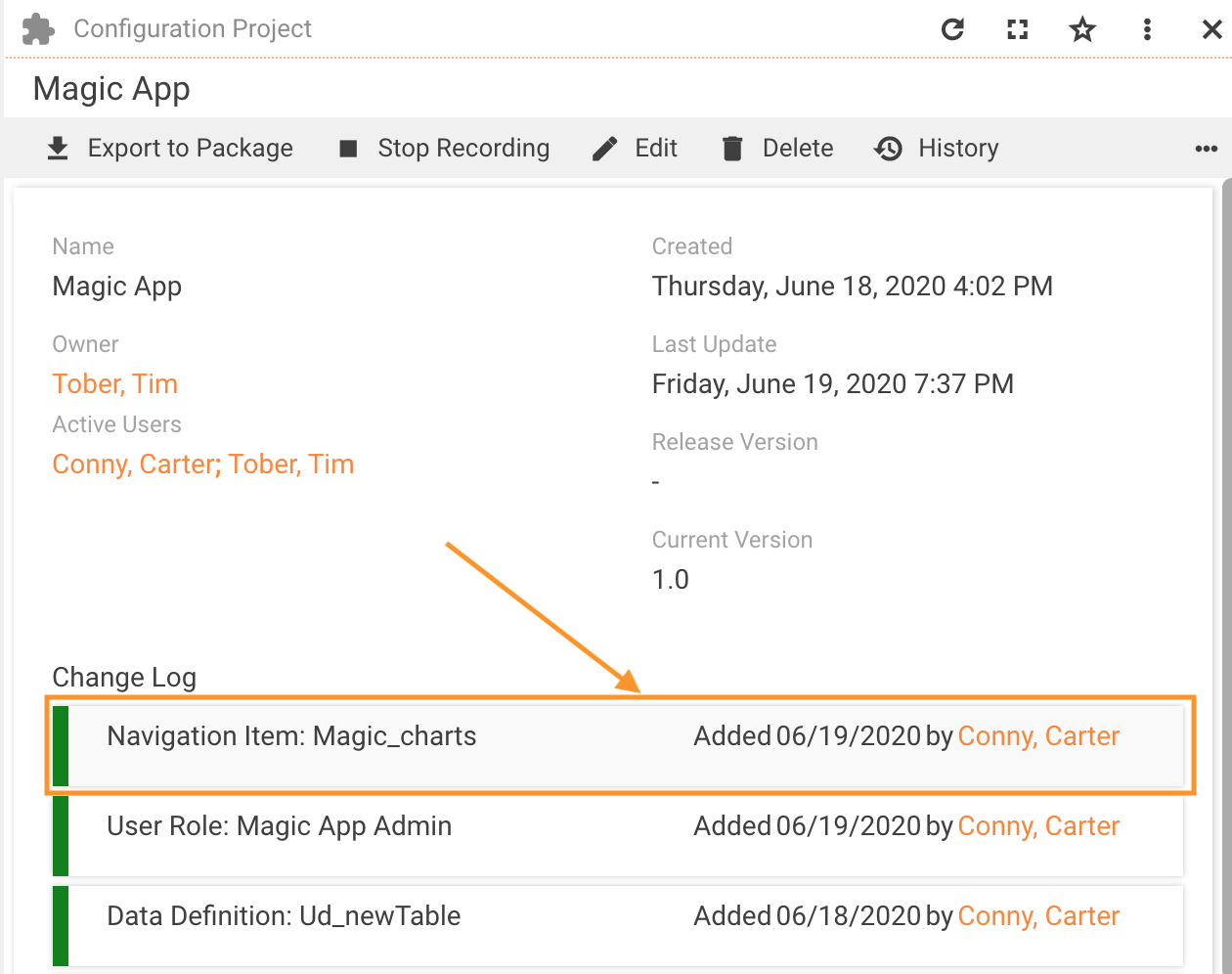Configuration Packaging Particularities
Overview
On this page you may find more details on the Configuration Packaging particularities and feature details.
Collaborative work
The default-available Record Customization feature is individually available for each Administrator, and the result of the recording is hidden, has no preview, and cannot be manually edited in the user interface. As a result, it is not possible to work together with your colleague on the same Configuration Project development, as well as it is hard to control your recording.
Instead, the Configuration Projects extension offers the following features:
- Unlimited projects: the amount of Configuration Projects developed on the same environment is unlimited;
- Automatic recording of the changes: Configuration Project can be In Progress, i.e. be actively developed by an employee with automatic recording of the modified or added to the system entities;
- Reviewing changes: the changes in the scope of the Configuration Project can be reviewed, adjusted and manually edited anytime;
- Collaborative work: several people can work simultaneously on the same Configuration Project development. Like in any other object of the system, the changes in the package can be merged or your changes can be skipped.
- Multi-tasking: each employee can actively develop only one Configuration Project at the same time in the same environment but can switch to any other project development when necessary. Manual adjustments are available anytime despite the Configuration Project status or currently developed project.
Change Optimization
Grouping changes
Each change of the Configuration Project includes a set of changes that are grouped according to the operation, the entity they are part of and in the scope of the same version of the package. Therefore if the update operation of a specific entity includes several changes they are grouped in one schema script and represented as one record of the Configuration Project's Change Log.
For instance, the following change includes adding a Data Definition to the CI and modifying the property of the CI:

These changes are grouped automatically during the Configuration Package recording on the background and by the Export to Package action. Manually introduced changes and changes from multiple project contributors are optimized as well.
For the changes introduced in one version of the package and deleted in the following version the optimization is not applied, all operations and changes are tracked and reflected in the Change Log.
A new object that is added and updated in the same version of the package is tracked as a single Add operation record in the Change Log and edit project page:

The description does not reflect these changes in the user interface but they are included in the Schema Scripts generated by the Export to Package action.
Removing redundant changes
The records for the entity will be removed from the Change Log and from the package if a specific change is introduced and then deleted within the same Configuration Package version.
Schema Scripts Order
Each change introduced in the Configuration Project is classified by the type of entity, operation, and version. Every change that is visualized in the user interface is technically represented as a script with specific data that introduces new, modifies, or removes existing elements of the system.
The Configuration Project that is exported to the package results in a set of files, referred to in Matrix42 system as Schema Scripts. These scripts are generated during the project export, grouped by entity types, and ordered automatically.
When a new Configuration Project is developed, the Order field of the introduced changes is blank and cannot be edited:

The schema scripts order is assigned automatically with the first export of the package and if necessary can be further edited manually. The schema scripts Order preview is available in the Edit mode of the Configuration Package:

This information denotes in which order the changes of the package are installed. The order is assigned based on the date, type of entity, and version of the change.
Do not edit the Order value manually unless you are familiar with the schema scripts architecture and types, otherwise, this may lead to data collision and corruption during package installation. More details on Schema Scripts architecture and particularities you may find on this page.
Scripts Order Interval
Order increment for automatically recorded changes has been increased from 1 to 10 in DWP 10.1 release version. This will simplify the manual adjustments of scripts for other cases:

Order is assigned automatically as the project development takes place and can be observed in the edit project mode even before the project export.
Schema Scripts Order can also be changed by the Adjust Scripts Order action.